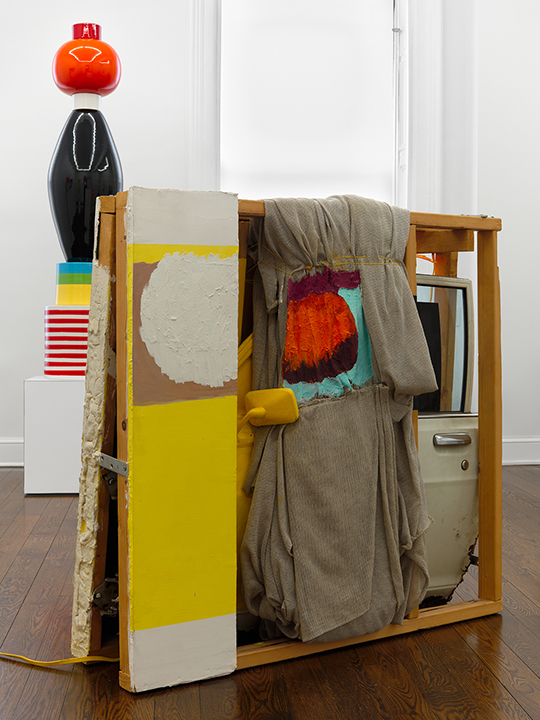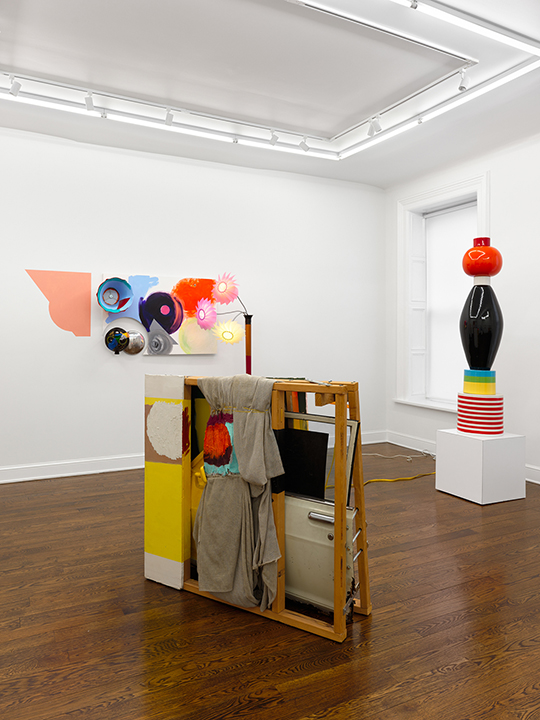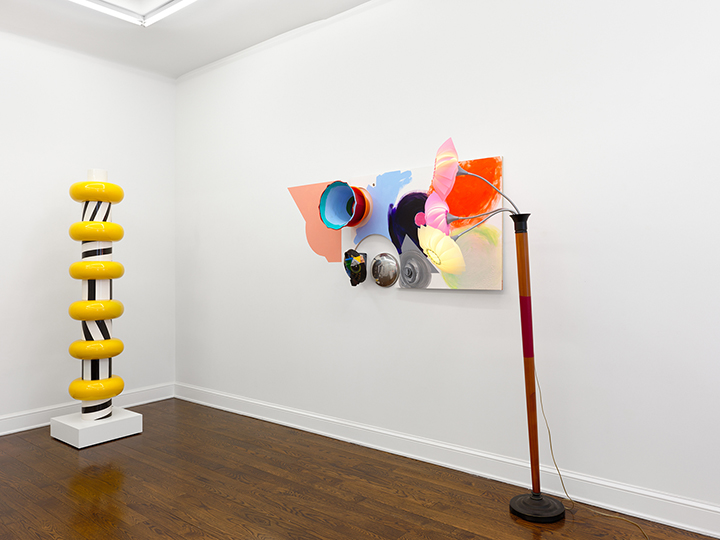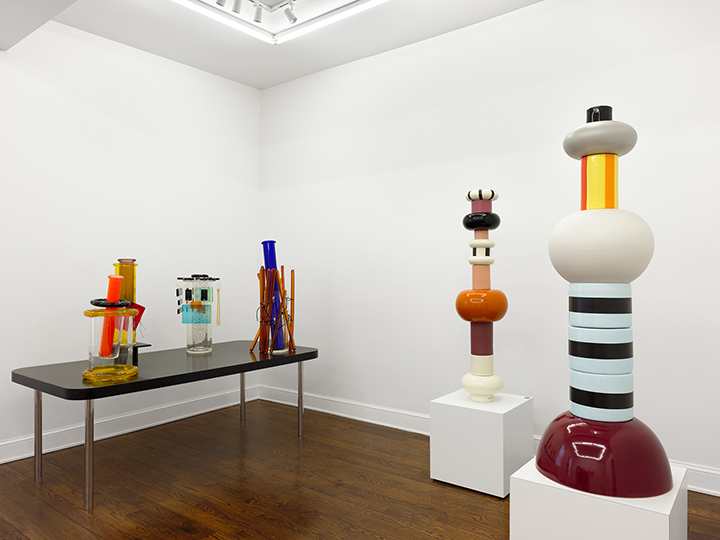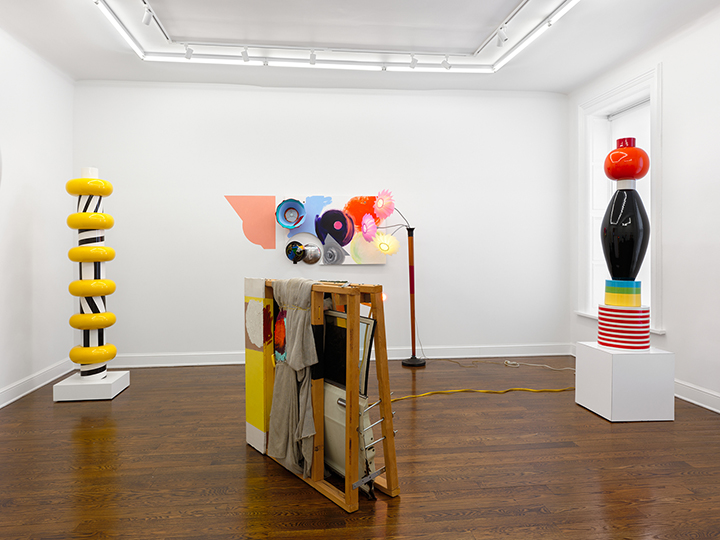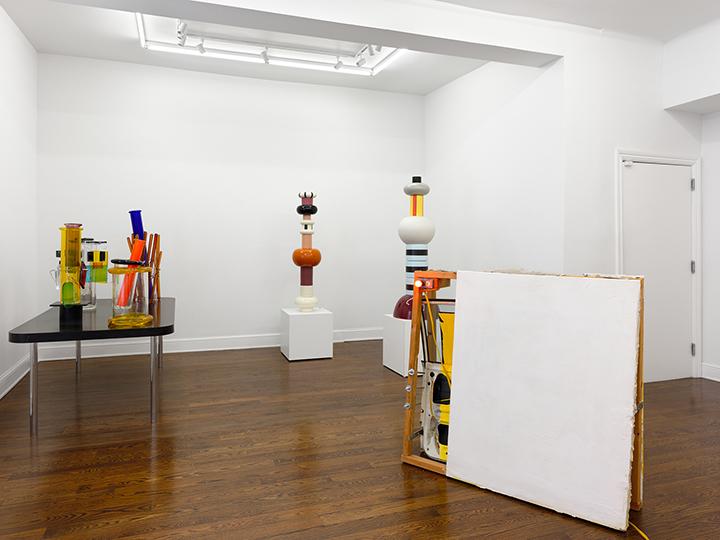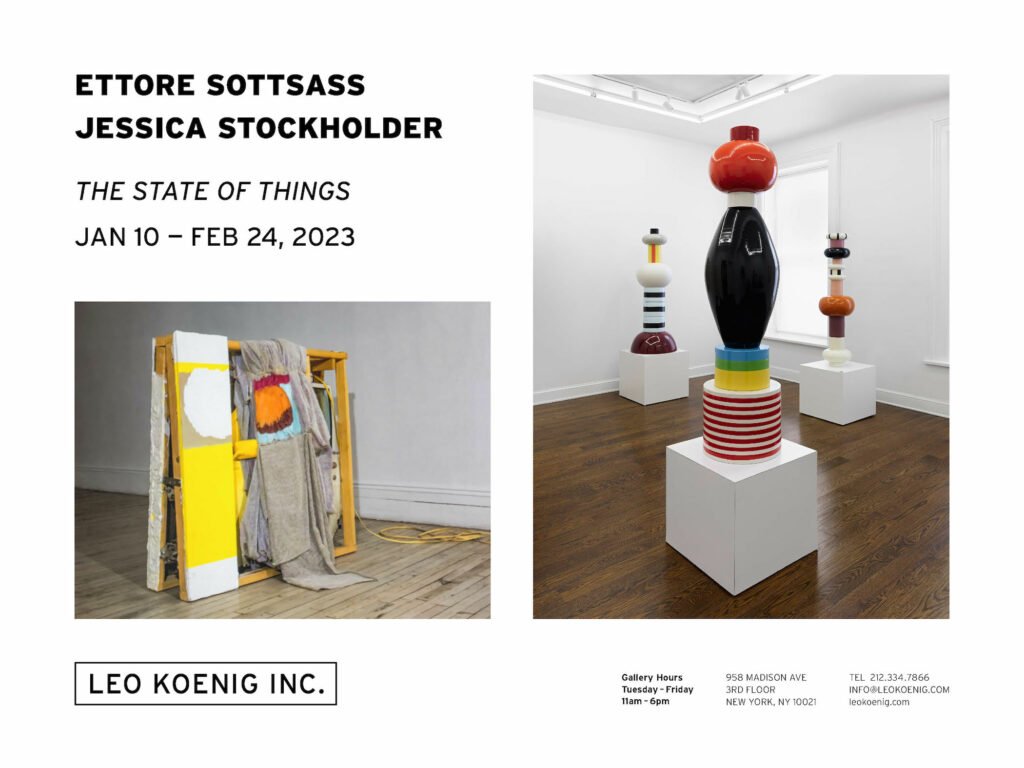Press Release
The State of things:
Ettore Sottsass
Jessica Stockholder
January 10 through February 24, 2023
Leo Koenig Inc. is pleased to start the New Year with the exhibition The State of Things, featuring works by Jessica Stockholder and Ettore Sottsass. Using Stockholder’s piece by the same title as a jumping off point, we are utilizing the sentiment to pause and take stock, which is the exercise often undertaken at the close of an old year and the beginning of a new one. The exhibition touches upon how a work intersects with a space, leading the viewer to question their surroundings, or perhaps even their place within those surroundings. Starting from a place of familiarity, incorporating everyday materials, or inverting a comforting domestic vessel into a puzzle of color and form, both artists turn that familiarity on its head, unsettling the viewer momentarily at the edge of rediscovering a designated space.
The exhibition features a selection of Totems and vases by Ettore Sottsass. Sottsass reportedly initiated his first totem while recovering from a near fatal bout of nephritis in 1962, when he sketched one from the cocktail of medicines that he would have to ingest to save his life. From the colorful capsules, Sottsass dreamed his oversized Totems. Often, the totems represented contemporary social, political, or spiritual concerns. But Sottsass also thought that the objects could occupy the surrounding space and determine its meaning. These objects to him, became the link between the spatial and sensorial experience of the viewer; their primary function acting as an energy catalyst. Forever critiquing consumerism and “good taste” Sottsass thought his ceramics were ‘deliberately and irremediably wrong’ and not meant to be sold and/or used. Meanwhile, many viewers espoused that they ‘enjoyed spending time in a room full of ceramics, which resembled an odd garden full of giant flowers’ (from a letter written by Sottsass to Aldo Londi, 31 May 1967)
“Manipulating Material is a way to speak.” Stockholder proclaimed to Barry Schwabsky in a catalogue interview published by Phaidon. In that same tome, Stockholder speaks with Robert Nickas about the work in the exhibition, and commented, “My work makes use of the state of things. I make my work on top of what is already there. Of course the result is that the work is made of what is there . It is an interweaving of how I see things, how other people have seen things before me and how people that see the work after I make it.” Forming a mimetic connection to the past, present and future through her assemblage (her chosen language), the viewer sometimes can be forgiven for momentarily being caught off guard. At the heart of her creation, we marvel at the space created by the diffuse objects incorporated into the room. But it is her distinct and uncanny use of color: brash, unapologetically joyful; that helps the imagination on a momentary journey, a trait that is also shared with the works by Ettore Sottsass.
Jessica Stockholder was born in 1959 in Seattle, Washington and currently lives and works in Chicago, Illinois. She has exhibited widely in museums and galleries internationally. Her work is represented in the permanent collections of numerous museums including the Whitney Museum of Art, New York; The Art Institute of Chicago; MoCA LA; SF MoMA; the Museum of Fine Arts, Boston; The British Museum, London; and the Stedelijk Museum, Amsterdam. Stockholder had her third solo exhibition at Mitchell-Innes & Nash, The Guests All Crowded Into the Dining Room, in the fall of 2016. Recent solo museum exhibitions include Stuff Matters at the Centraal Museum, Utrecht and Relational Aesthetics at The Contemporary Austin, Austin in 2019.
Ettore Sottsass (Italian, 1917–2007) was an architect and designer, labeled the godfather of Italian design. Born in Austria and raised in Milan, Sottsass studied architecture at the Politecnico di Torino in Turin. After spending most of World War II in a concentration camp in Yugoslavia, Sottsass returned to Milan, where he set up his own architectural and industrial design studio.
In 1958, he was hired as a design consultant for the Olivetti company. While there, he produced numerous designs, including the Elea 9003 computer and the red plastic Valentine portable typewriter. His aim was to produce objects that went beyond typical consumerist products, and thus came to define postmodernist design.
As Sottsass distanced himself from pure functionalism, he started experimenting with designs that had social and historical components. During this time, Sottsass became a leading figure in the Anti-Design movement. In 1981, Sottsass led a group of designers who came to be known as the Memphis group. This group experimented with colors and media, creating multifunctional pieces and breaking with convention. Their materials included neon, unusual finishes, and patterned plastic laminates.. He also established the architectural firm Sottsass Associati, with the aim of producing large-scale designs.
Sottsass’s work has been the subject of retrospective exhibitions at the Centre Pompidou in Paris, the Los Angeles County Museum of Art, and the Design Museum in London, among others. His numerous awards included the title of Office of the Ordre des Arts et des Lettres of the French Republic in 1992, an honorary degree from the Rhode Island School of Design in 1993, an Honorary Doctor of the Royal College of Art in London in 1996, an Oribe Award in Japan in 1997, and a Sir Misha Black Award in 1999.
Gallery Hours are Tues.-Fri.11-6. Please contact the gallery for more information or email us at info@leokoenig.com
